Will a 3-Inch Lift Affect Gas Mileage?
Getting a lift kit for your truck is almost a rite of passage for all truck modding enthusiasts. However, despite the amazing change to the looks of the truck, lifting your truck will also make some not as amazing changes to the fuel economy of the truck.
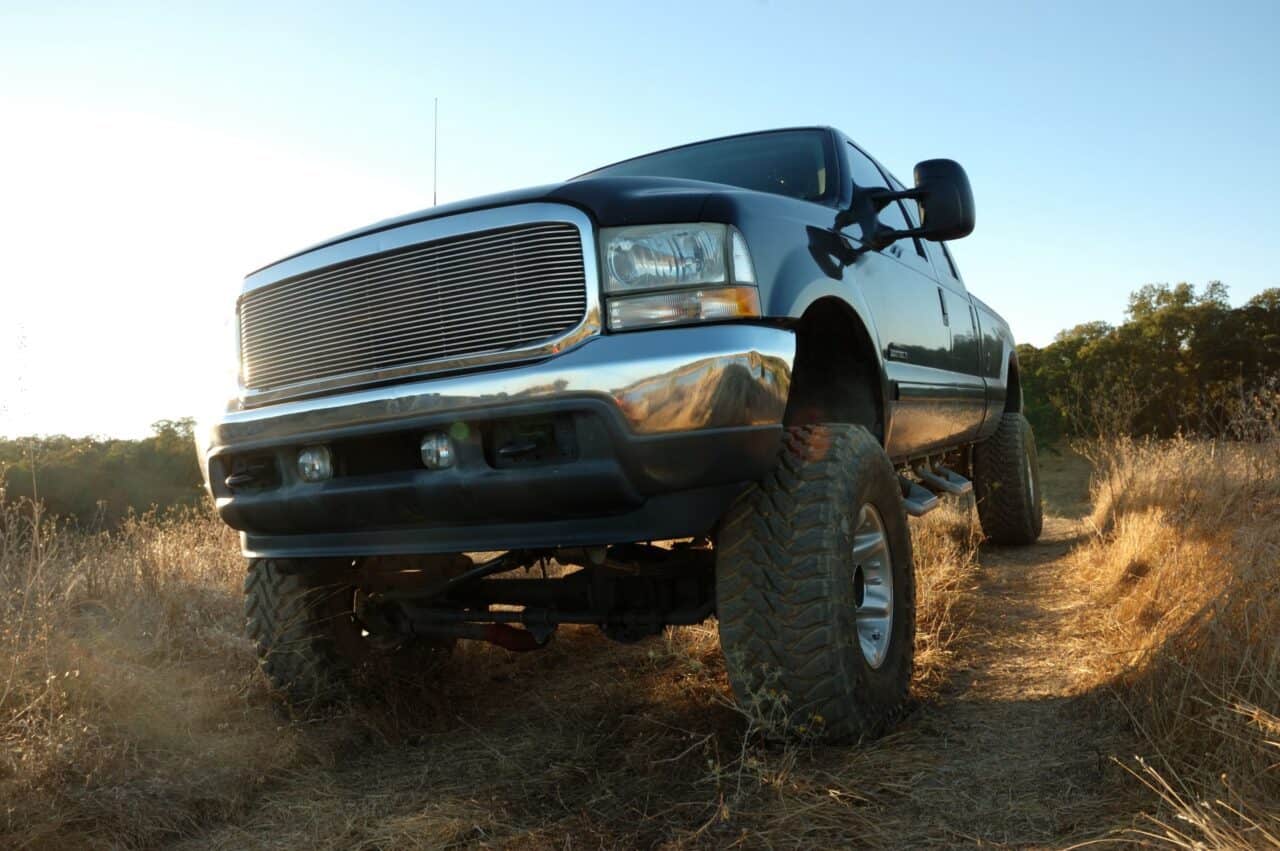
How much does a lift affect mpg?
Lifting a truck will only moderately decrease your fuel efficiency. A 3-inch lift will only decrease your overall fuel efficiency b 1-2 miles per gallon.
When a truck is lifted, even by three inches, it becomes less aerodynamic; and as more air is allowed underneath the carriage, drag, and turbulence on the truck increases. Additionally, the lift kit adds weight to the truck. These factors affect and lower the gas mileage of the lifted truck.
Lifted trucks are just not as fuel-efficient as their stock, or even leveled, counterparts. Depending on the height of the lift, though, the difference in fuel economy might not be low enough to make that much of a difference.
Do lifted trucks waste more gas?
Yes. Lifting a truck and installing new and bigger tires will lower the fuel economy of the truck. Lifting a truck between 6 and 10 inches is within the acceptable limit, but that will alter the factory setting and geometry of the truck, making it less efficient.
When you add larger wheels, you increase the size and the weight of the truck. This means the truck will need more energy to pouch it around, and this translates to more fuel burned. If you use a leveling kit to lift the front part of the truck, you will still lower the fuel economy.
The use of a leveling kit keeps the nose of the truck raised when the truck is under load, and this increases wind resistance. Luckily, there are several ways you can increase the fuel economy of your truck even after lifting. Read on to learn more.
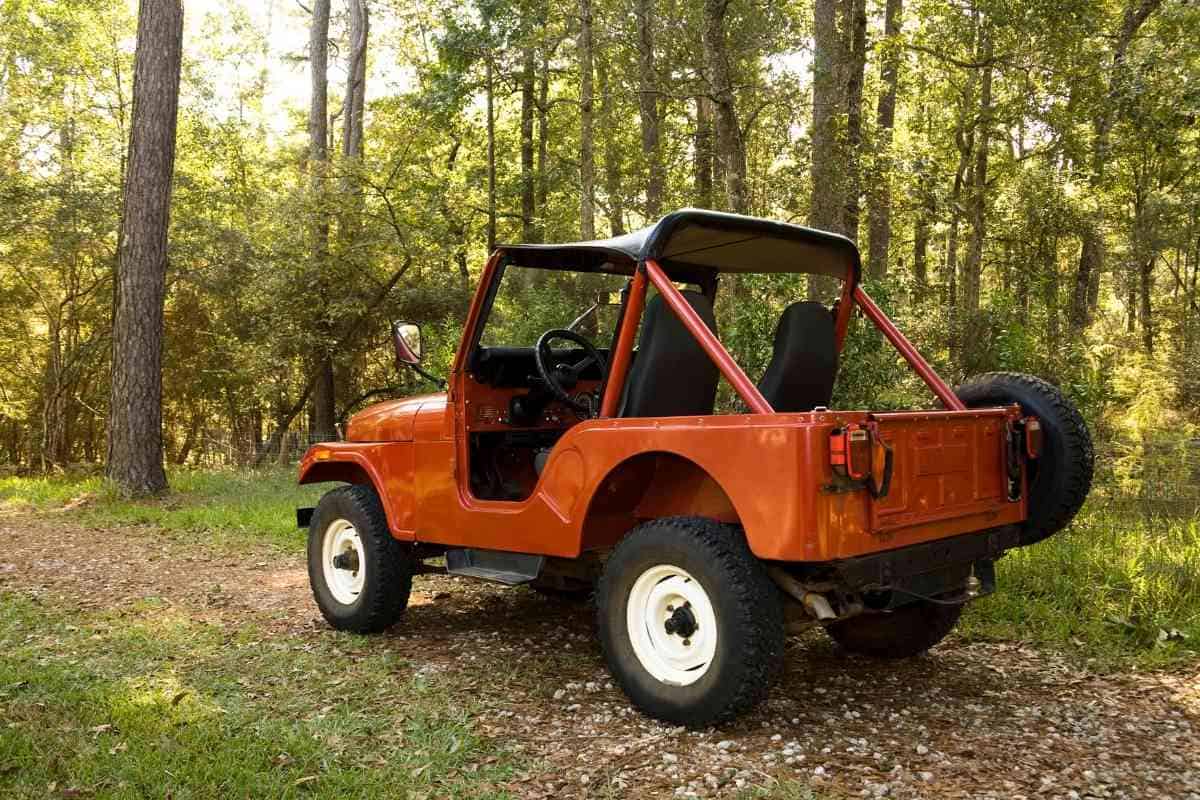
How Much Will a 3 Inch Lift Affect Gas Mileage?
It’s fairly well known that adding weight and changing the aerodynamics of a vehicle will affect its fuel economy. The same is true when you level or lift a truck. Lifting a truck changes the aerodynamics of the truck, often adds significant weight to the vehicle, and changes the weight distribution of the vehicle, all, in turn, lowering the effective gas mileage of the lifted truck.
However, despite all that, the difference in gas mileage between stock and the same truck with a 3-inch lift may not be as drastic as you might think. Many people, myself included, reported that with a truck with the only modification being a 3-inch lift, the new gas mileage was only around 1 to 2 miles per gallon less if that.
With that being said, don’t be surprised to see a more significant difference between a stock truck and a truck lifted higher than 3 inches, as the hardware required to do so weighs more and adds more drag to the vehicle.
So that you can better understand the changes that happen to your truck after lifting it, we’ll be looking at the factors that affect your fuel economy:
- Aerodynamics
- Weight
- And other, smaller factors
Aerodynamics

When installing a lift kit in a truck, there are a couple things that happen:
First, the truck is lifted higher into the air.
Lifting the truck higher into the air increases the amount of air that is able to flow underneath the truck, increasing drag, and changes the weight distribution of the truck, making it more top-heavy. Those two things combine to make it harder for the truck’s engine to be able to push the vehicle in the ways it needs to, expending more energy and fuel.
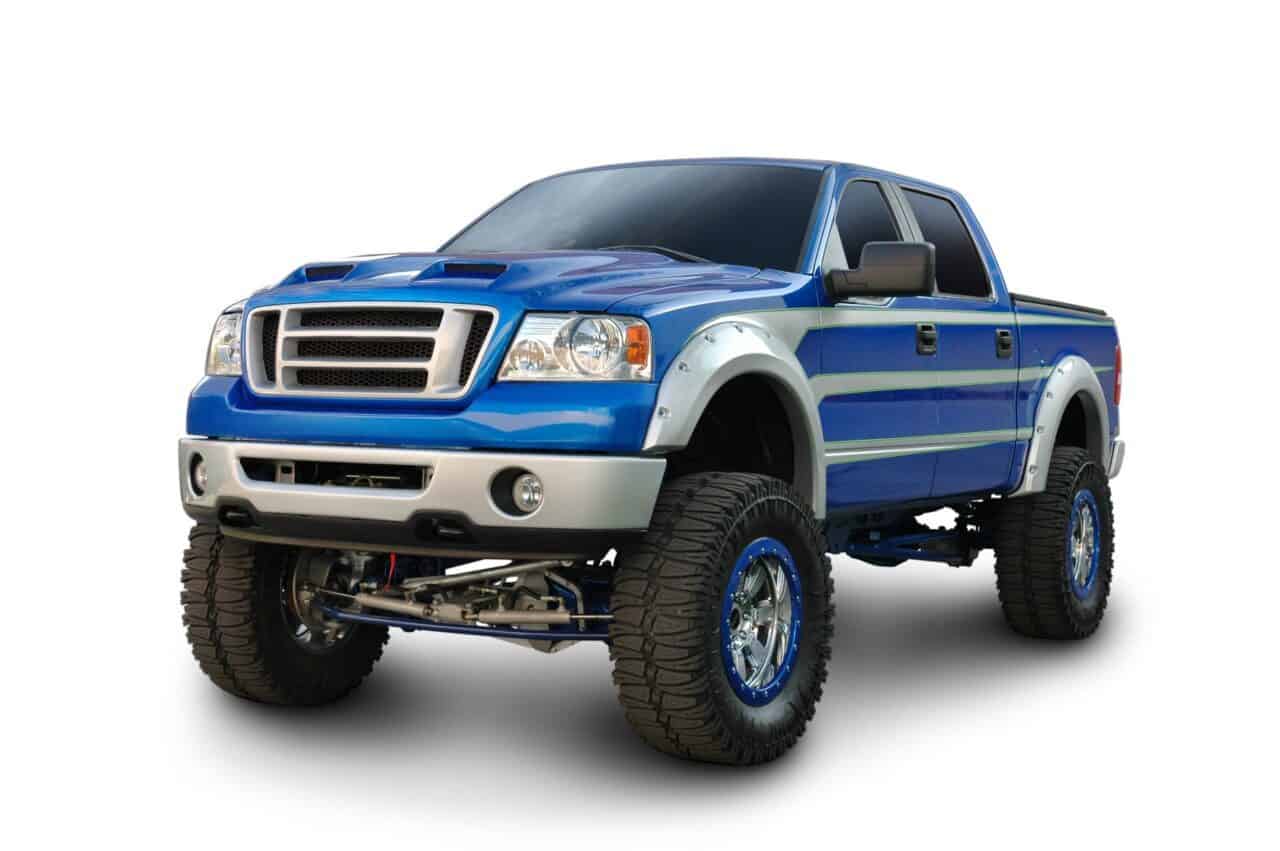
Secondly, the truck is leveled out.
A lift kit is similar to a leveling kit in that it will level the truck out, but different than a leveling kit in that it also lifts the truck higher off of the ground.
A stock truck’s cab is lower than its bed. When a truck is made level, the cab is raised to be level with the bed. This raising of the cab messes with the aerodynamics of the truck. Before, the truck was angled slightly downward, offering a more aerodynamic and fuel-efficient stance.
After leveling, the nose of the truck is faced directly into the wind, largely increasing the drag experienced by the truck.
When combining these two things together, it increases the work the engine has to do to maintain speed and accelerate.
Weight
Weight plays a big role in the fuel economy of vehicles.
The lighter the vehicle, the easier it is for the engine to exert force on it and cause it to accelerate or maintain speed. The heavier the vehicle, the harder it is for the engine, as it has more weight to pull. This is why having lots of passengers or towing lowers your gas mileage.
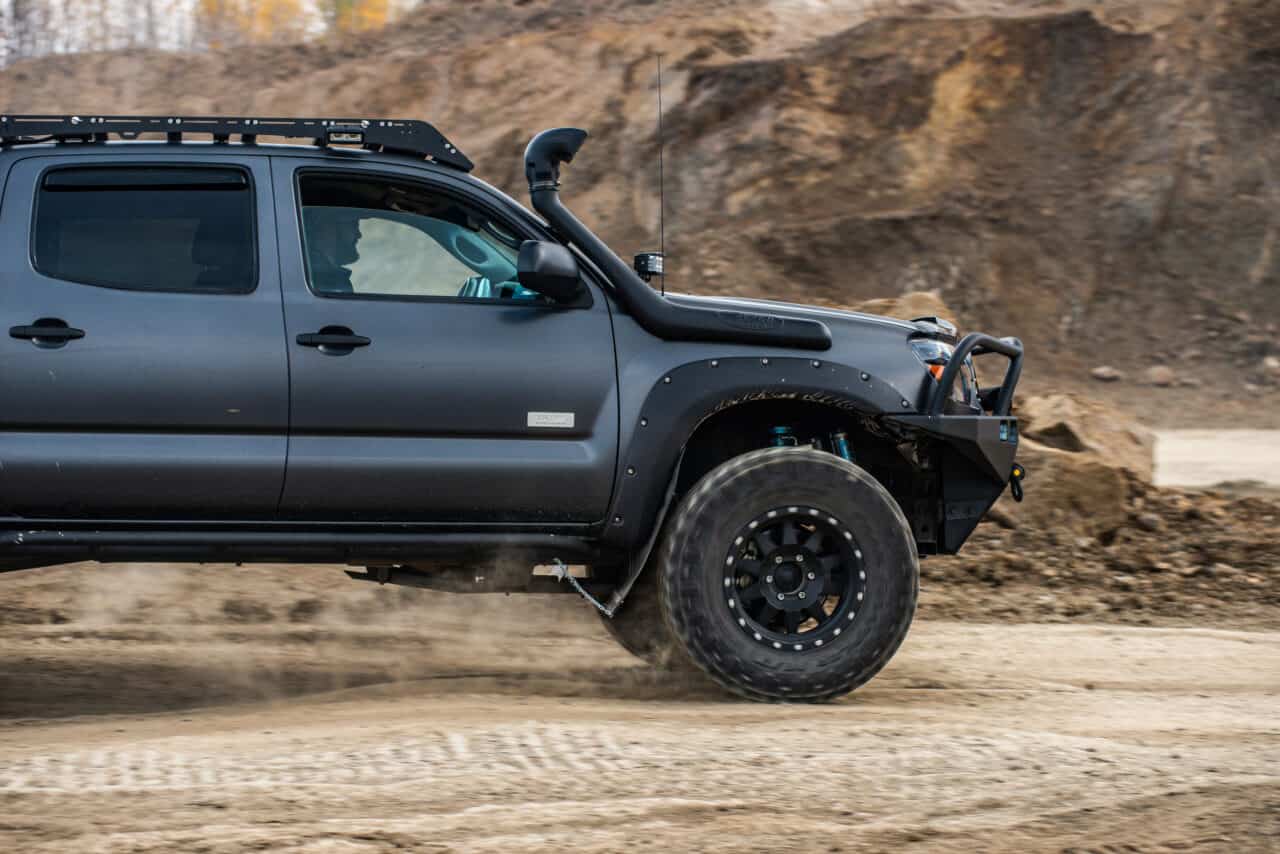
A lifted truck has had some additional hardware attached to the undercarriage. Some suspension lift kits can add a significant amount of weight to the truck.
Also, as mentioned with the aerodynamics, the lift in the truck changes the weight distribution and the center of mass. Before the lift, the center of mass was lower to the ground, which made it easier for the engine to move it. As you lift a truck, the center of mass goes with it and makes it increasingly harder for the engine the higher the center of mass is.
Other Factors
While weight and aerodynamics are two of the factors with the biggest impact on fuel economy, they aren’t the only factors.
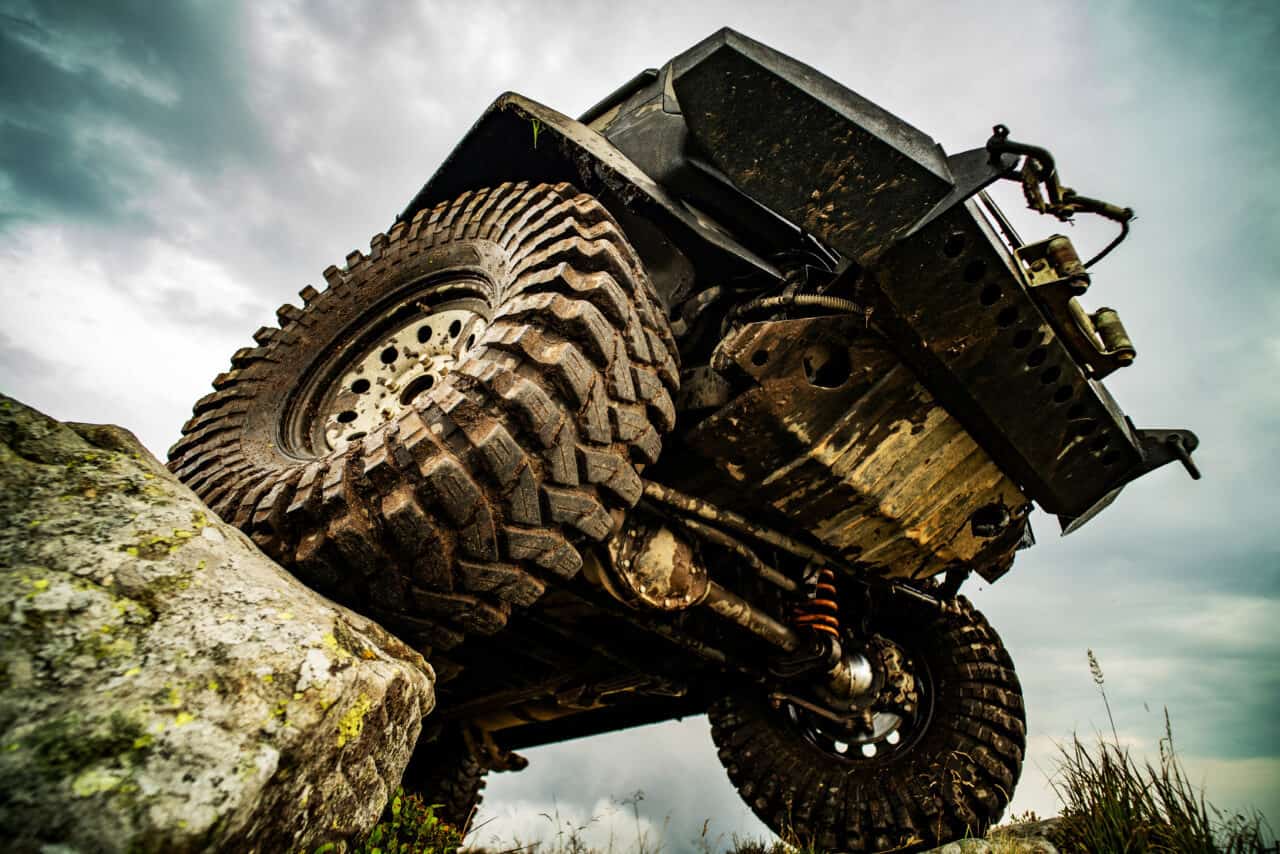
Should you tow a lot with your truck, naturally the added weight of the trailer is going to affect the gas mileage of the truck, lifted or not. However, towing tends to affect the gas mileage of a lifted truck slightly more than a stock truck, so keep that in mind.
Another factor will be the tires you use. A lot of people get bigger tires after lifting their truck. In fact, some people lift the truck specifically to use bigger tires.
Bigger tires do in fact affect the gas mileage of your truck. The bigger the tire, the heavier it is.
Also, larger tires have larger diameters and more of the tire touches the ground, resulting in more resistance and friction from the ground itself, causing the engine to have to work harder.
Will a Bigger Lift Have a Bigger Impact?
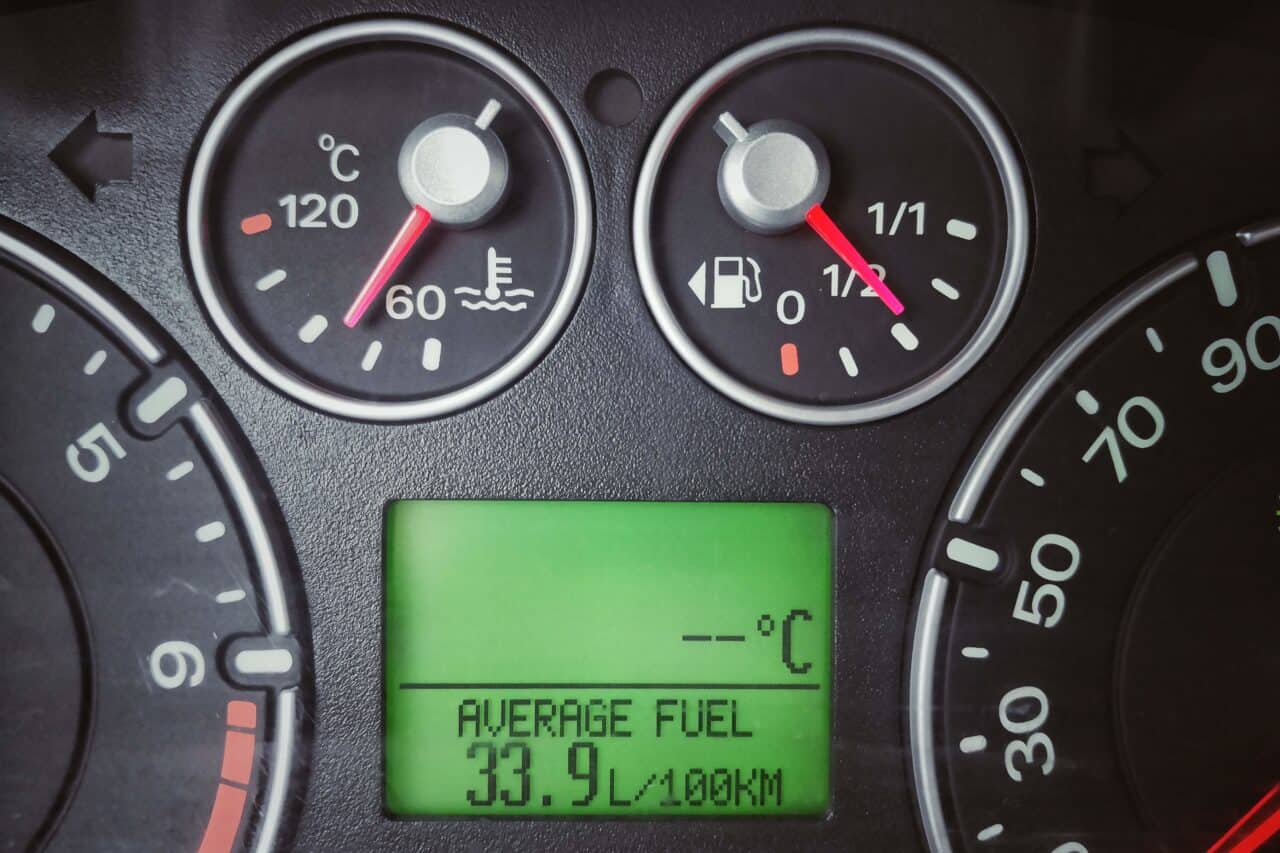
While a 2 or 3 inch lift won’t have a super big effect on a truck’s fuel economy, a 4 inch or greater lift will.
The bigger the lift, the more that has to be done to the truck. In the case of a 2-inch lift, and even sometimes a 3-inch lift, all that needs to be done is change the torsion bar keys and add a couple of blocks of aluminum under the leaf springs. Most of the time, this will be anywhere from a 5 to 10-pound addition of weight; a basically negligible increase in weight.
However, when lifting the truck more than that, significant work has to be done on the suspension system and the rest of the undercarriage. All this work and the addition of the new parts add some fairly significant weight to the system, increasing the demand for the engine and the impact on the gas mileage.
How Can I Improve Gas Mileage on a Lifted Truck?
Don’t worry, though, after lifting a truck it isn’t all doom and gloom, and fill your truck up with gas every other day. Fortunately, the gas mileage of a lifted truck can be improved.
Pick the Right Lift Kit
There are several lift kit options – some are light and others are very heavy. When you pick a heavy lift kit, it adds to the curb weight of the truck, and this impacts gas mileage. When the truck is heavier, the engine will work more and harder to push it around.
When shopping, consider high quality kits that balance weight and performance. Again, you do not have to go overboard with the lift. If a 4-inch lift allows you to fit the larger wheel you need, then you do not need to go further.
Check your tire pressure
One of the simplest ways to improve your gas mileage is to make sure your truck’s tire pressure is on point. Even just a slight variation in tire pressure can cause a drop in gas mileage, and with lifted trucks, we need all the help we can get.
Pick the Right Tire
Bigger tires are part of the increased weight of the truck. Most of the tires fitted in lifted trucks offer better traction, allowing one to drive off the road. Tires with less traction would enhance the efficiency of your truck, but that may not meet your needs.
As such, you need to ensure you never go for tires bigger than you will need. Again, choose the right type of tires for your applications. You do not need a heavy winter tire if you live in a relatively warm area.
You can also reduce the weight of the wheels by swapping steel wheels for alloy wheels. Alloy wheels are much lighter compared to steel, and this will significantly cut weight. This will help when you add larger tires, which may be a little heavier.
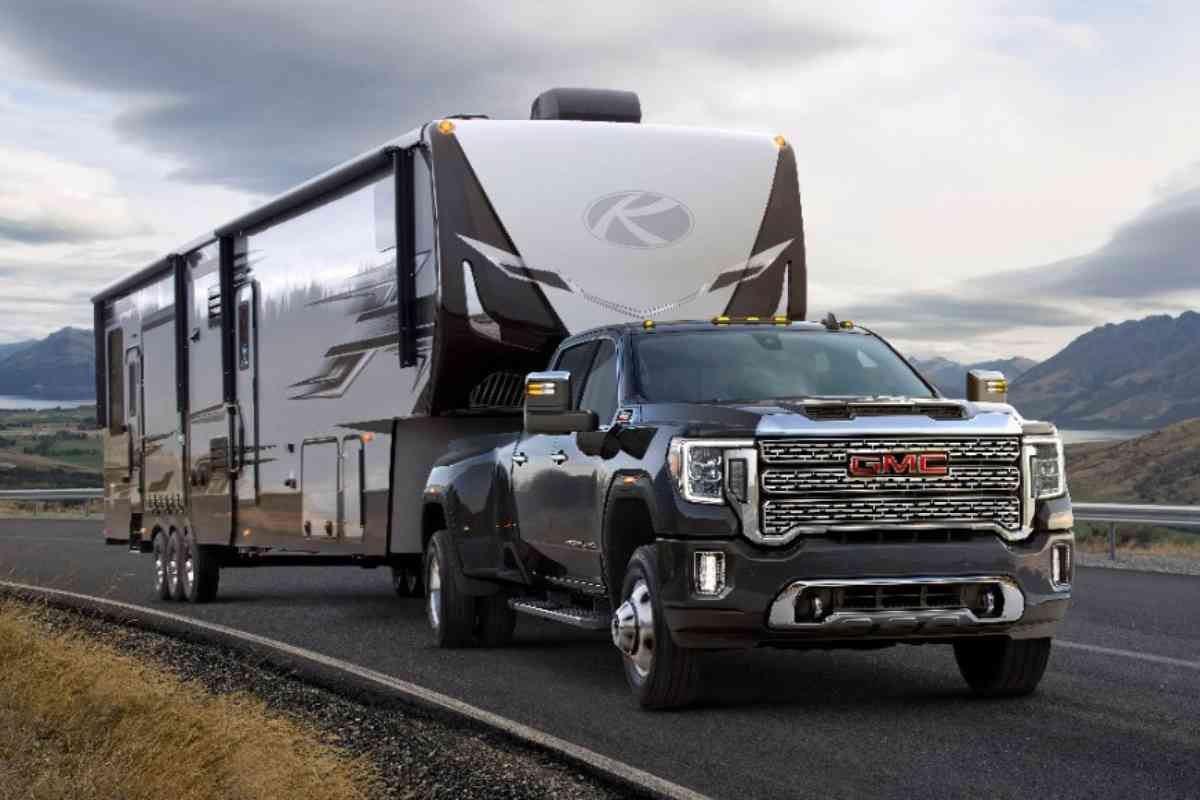
Cut The Weight of Your Truck
If there are unnecessary items and parts in your truck, you need to keep them off so that your truck feels lighter. The first thing you can do is pick a lighter fifth wheel – one made of aluminum or any composite material. You may not notice the reduced weight, but you will be happy when you get to the weight station and your truck weighs less.
If you are replacing any parts of your truck, use lightweight parts. Instead of using steel for your body panels, you can go for aluminum or carbon fiber or any composite material that is lightweight and cuts on the weight of the truck. Getting a new hood will cost you a lot, but it can mean great savings in fuel.
Your wheels, gear cases, and cross members can also use a lightweight upgrade. Today, there are so many anti-corrosion coated materials that can make your truck better. Better still, these upgrades will make your truck better at resisting salt and other chemicals on the road.
Most composites do not rust and are a great addition to your truck. So, when you upgrade, you get better fuel economy and your truck is more durable.
You can have smaller engines as long as it delivers the power you need. What is the use of having a 13-liter engine when you can have a nine-liter engine that gives you the same power? Manufacturers are now creating smaller engines that offer the same power as larger engines.
These engines may be up to 500 pounds lighter than larger models, and that makes your lifted truck more fuel efficient.
Another way to keep the weight down is to go for lightweight suspension system. It is easy to find high-strength steel materials that are lightweight and deliver durability.

Have Less Luggage in Your Truck
Do you always have a tool box full in your truck? I know it feels badass to tow a toolbox with more than EDC tools. I have had one in my truck for a long time until I realized it takes so much space and also adds weight.
It is okay to have a few tools, but not tools you will never use. I also know people who have a load of clothes in their trucks, most of which they never need.
The bottom line is, remove unnecessary items and fittings in your truck to reduce its weight. For instance, if you have a sleeper box, you can remove it as you may not sleep in your truck often. However, if you drive your truck across the country, a sleeper box will be a great option, but you can reduce its size from 60 inches to 42 inches.
Use of Aero Packages
The nose of your truck needs to be aerodynamic to reduce air resistance. The cab and the windows too need to be aerodynamic, and this will help you cut down on the fuel you burn, pushing against wind. Automakers engineer trucks to be aerodynamic, but there are still things you can do to increase the aerodynamic design.
Cab extenders and side fairings are available to enhance the shape of your truck for better aerodynamics. However, note that these fittings will add to the weight of your truck. If you only drive around town at low speeds, you do not need enhanced aerodynamics.
These fittings are ideal for truck drivers who spend most of their time on the highway, driving at very high speed.
Although there are so many ways to make your truck more fuel efficient, you will have to spend a lot of money to achieve the efficiency. Replacing available parts with lighter materials will give you better fuel economy, but will cost you more money.
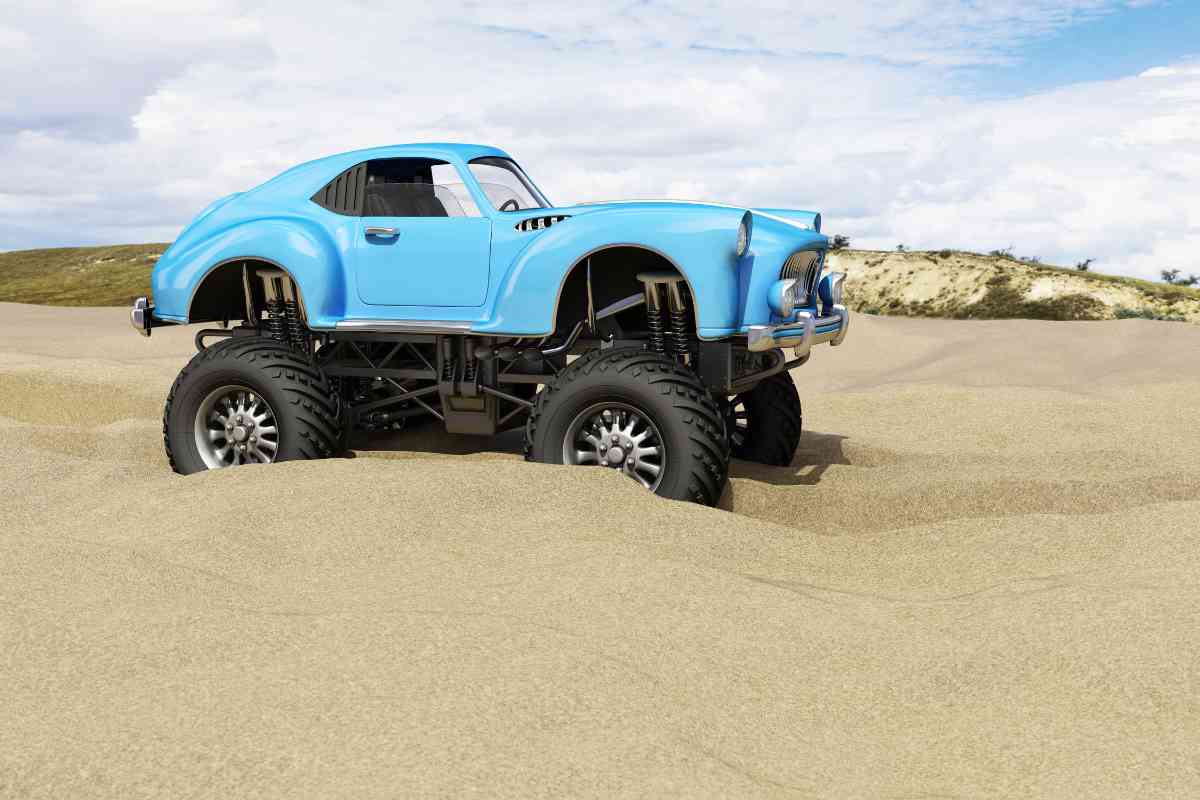
Upgrades & Regears
Another solution is to upgrade some of the parts of your truck. Adding a performance exhaust, a new programming chip, or an air intake will all improve the performance and efficiency of the truck.
Receiving the biggest benefit from re-gearing the truck also requires you to have put bigger tires on your lifted truck.
Briefly, the gears that help to turn the tires are adjusted for the stock equipment in a stock truck. When you go in and mess around with the equipment in the truck, adding new tires and messing with the suspension, the gears have to turn more in order to push the tires the same amount as before.
By increasing the gear ratio of the gears in your truck, or the size of the individual gears, you can mitigate this issue. However, regearing a truck is an extremely complicated thing to do, and most certainly requires a professional.
I do not recommend you try and regear your own truck. Take it to a professional that is good at regearing trucks, and watch your truck get the best gas mileage it’s gotten since it was lifted.
Drive Better
Fittings such as aero packages can be expensive and can also add weight to your truck. You can avoid them and make your truck more efficient on-road.
A few changes in your driving habits will enhance your truck’s fuel economy. For starters, you need to accelerate slowly after a stop. When driving on the highway, keep your speed as close to the limit as possible as driving fast saves you energy.
Other driving habits for better gas mileage include:
- Use the cruise control feature as much as you can to avoid unnecessary stops
- Keep your truck in good working condition as the manufacturer recommends
- Choose the right tires – all-terrain tires will be ideal unless you often go off-road
- Buy premium fuel
- When driving off-road, remove roof rails you may never need
- Add tonneau covers to the truck bed to manage air flow
Why Have a Lift Kit Anyway?
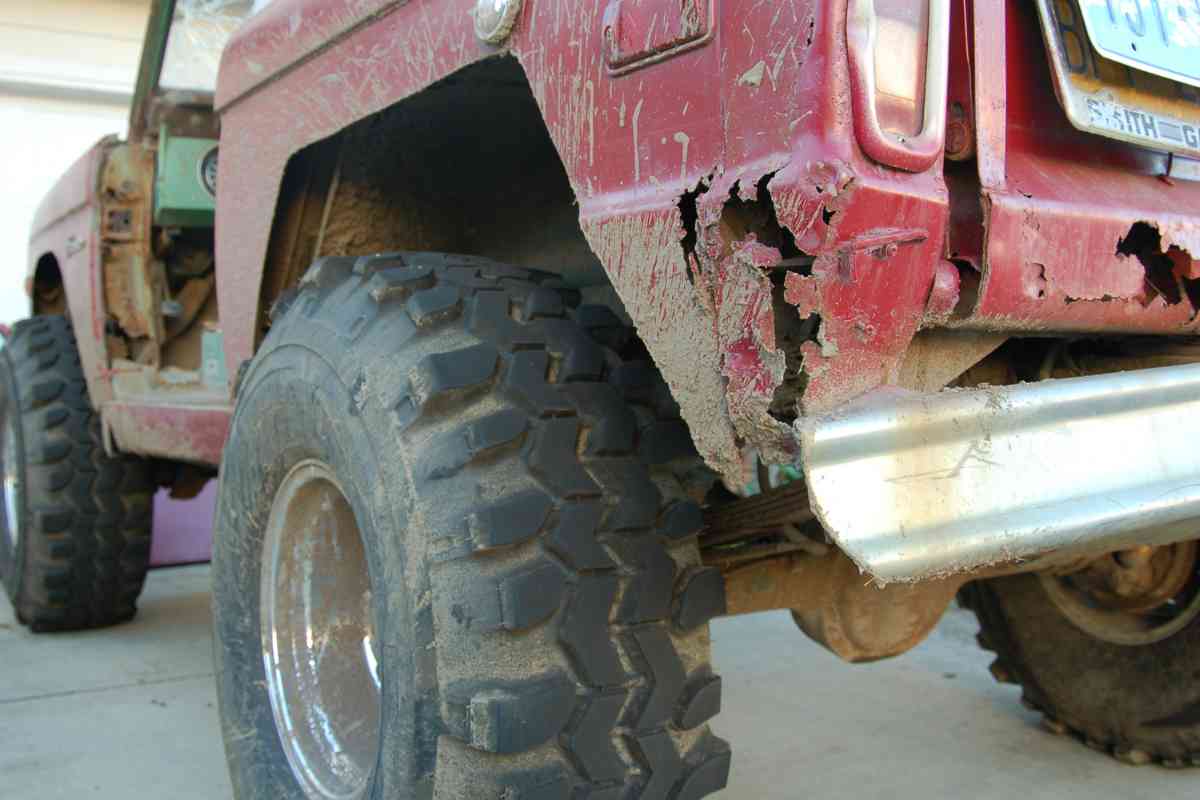
If lifting your truck means you will spend more on fuel, why have the kit anyway?
When you lift your truck, you are able to fit bigger tires and have more ground clearance. With that, you can drive the truck on rocks, deep snow, deep waters, and other rough terrains. The larger tires may add a little weight, but they give you better traction when you need to go off the road.
When you lift a truck, you get three or four inches of more ground clearance. From the driver’s seat, you will have a better view of the road, allowing you to navigate with ease. Better still, lifted trucks look better than other trucks with their bold stance.
When under load, trucks will squat down. You can ensure your truck stays up when towing or when hauling by giving it a lift. The lift kit balances the height of your truck with and without load to keep it steady and give it a level stance.
If you need to improve the straight line performance of your truck, you can do so with a lift. Your truck feels more comfortable and the ride is smoother, giving you better towing capacity.
If yours is a work truck, you will enjoy better braking and better road holding capacity.
Installing a suspension or body lift kit is a great idea for people who need to carry heavy loads and those who need to go off the road. If you only drive your truck on the highway, and you never tow or haul heavy loads, a lift kit will only serve as decoration.
It is easy to install a lift kit, but if it doesn’t serve any purpose, you do not need to lower your gas mileage for no reason.
Do Lifted Trucks Have Other Disadvantages Besides Fuel Economy?
I recommend lifting of trucks for people who drive off-road. Although you will have a few disadvantages to deal with, your truck will generally perform better. Your bigger tires will take more power to push, but they will offer more traction for better off-road and winter performance.
One other issue you have to deal with is poor handing. When you lift a truck, you raise its center of gravity, and this increases its chances of rolling over when you speed. The risk is more when you are taking sharp corners at high speeds.
Because you know this, you will need to drive slowly when you get to corners to ensure you are safe on the road.
Another reason you may be hesitant to lift your truck is that you lose your warranty. Before you lift a truck, call your dealer and confirm if that voids your warranty. If it does, analyze what you will lose and see whether the lift is worth it.
After lifting your truck, there are so many other modifications you may have to make to ensure your truck is street legal. Such modifications will cost you a lot of money. Laws on vehicle modifications vary from state to state and these additional modifications may not be optional in your state.
Lastly, lifting a truck is costly. You will spend between a few hundred dollars and tens of thousands to get the look and performance you desire. The costs go even higher when you have to make other adjustments to increase the fuel economy of the truck.
Lifting a truck has many benefits, namely for the way it makes the truck look. Don’t let the downsides of lifting a truck scare you; many can be circumvented. While a truck with a 3-inch lift may need to be filled up slightly more often than a stock truck, it’s certainly worth the extra gas.
Best Lift Kits for Jeeps

This question has the potential to vary drastically. There are two main reasons for this–the first is that the year and exact model of your Jeep may affect the type of lift kit compatible with your vehicle. The second is the reason you have for lifting your Jeep. Are you doing it simply for aesthetic purposes? Do you want to be able to go just a bit off the beaten path? Or do you want a full-fledged, off-road-ready vehicle?
Your stock model Jeep will be capable of a great deal as it is, so if you’re looking for something to take you to your out-of-the-way camping destination, chances are you won’t need to modify your Jeep at all.
If you are looking to lift your Jeep for aesthetic purposes, my first suggestion is this basic lift kit. It’s inexpensive–less than $70–and it adds almost no weight to your vehicle. That will be beneficial for your fuel economy. The lift is only 0.75 inches, but it’s enough to add a larger wheel size to your Jeep.
It is important to note that when you add larger tires for a look, you may be giving up some functionality of the vehicle in off-road conditions. As the top of the tire will sit closer to the top of the wheel well, larger bumps may very well cause your tires to rub. This isn’t a huge deal if your Jeep is your daily driver, but it may cause issues off-road.
If it’s about more than just an increase in tire size for you, and you want your Jeep to be higher off the ground, this lift kit might be more to your liking.
Still lightweight, this lift won’t immediately destroy your gas mileage with bulk, this kit adds an additional two inches of height. That might not seem like much, but it is a greater increase than you would imagine, and you’ll still have more options for tire size.
When it comes to finding the best lift kit for an off-road jeep, there are many factors to consider. Gas mileage tends to take that back seat in favor of more climbing ability. But fuel efficiency can’t be completely forgotten or you might run out of fuel while you’re off-road.
The type of Jeep that you have changes the lift kit you can install on your vehicle. Assuming you drive a Wrangler, whether it is a 2-door or a 4-door will change the lift kits you have to choose from, though many lift kits are available for both 2 and 4-door models.
Generally speaking, you are going to want to lift your Jeep at least 4 inches to maximize your off-road experience. Something like this is great if you have an early 2000s Wrangler TJ. It provides you with enough lift to conquer most off-road trails.
Something like this is perfect if you have a newer Wrangler JK. Like the previously mentioned kit, this provides a 4-inch lift which is perfect for off-roading. When it comes to off-roading and lift kits, it’s hard to go wrong with Rough Country, which makes both of these lift kits.
Lift kits for true off-roading are going to be heavy, and are not designed to maintain fuel efficiency. There best way to mitigate your loss in fuel efficiency is to have your Jeep re-geared when you have a lift kit installed. Remember to adjust your driving habits and you should still get decent mileage from your Jeep.
